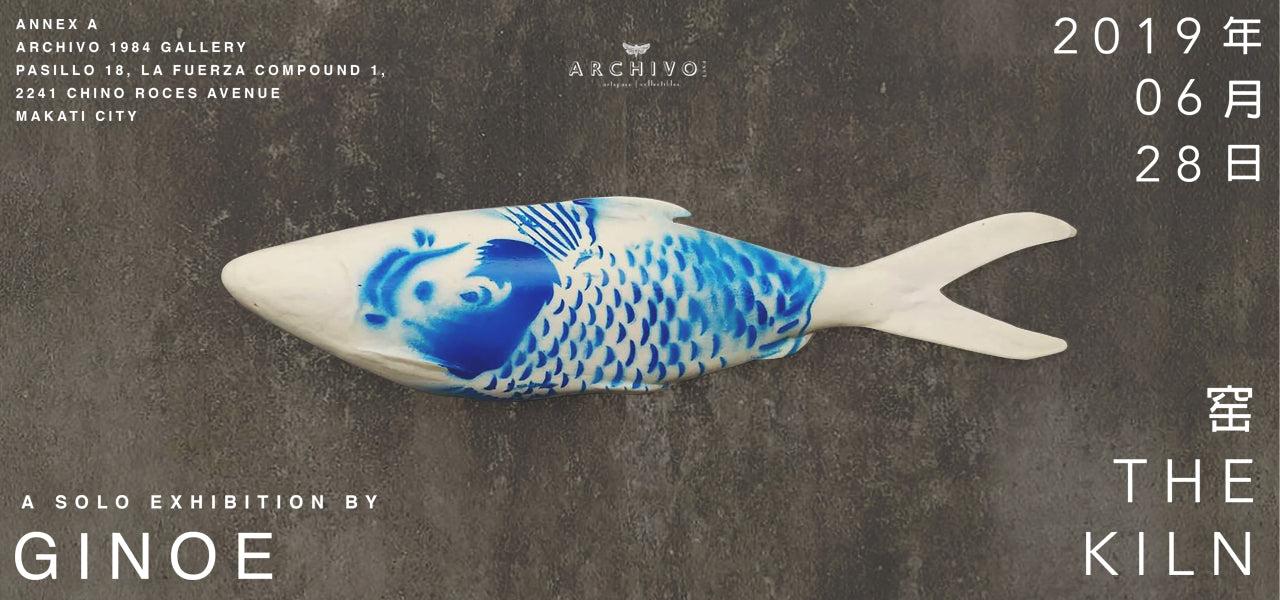The Kiln

GINOE
6 JUNE - 20 JULY 2019
-
How do we wade through the complexities of national and individual identity? In whose image are we molded from? What forces assert their imprint on us? In his first major exhibition aptly titled The Kiln, GINOE attempts to navigate through these questions in light of the rising tension between the Philippines and the People’s Republic of China. A tension which continues to inspire unexamined anger and paranoia in how we regard the Other.
A kiln is a furnace used for baking bricks, pottery, and porcelains (incidentally also called “china”). By naming his exhibit after this space from which art objects are made and harboured, GINOE proposes art-making as a potent lens from which we could start engaging with these questions. Art cultivates in us an appetite for nuance. Productive discourse begins when we slice through the surface, against the tide of gross simplifications. It happens in the murkier, shallower parts of the water.
In The Kiln, GINOE complicates the very ways we engage with questions of how we relate to this other nation. He does this through deft juxtaposition of distinguishable layers of motif, a dizzying array of cross-references, and strategic visual framing. He employs techniques which often forces the viewer to double-take: am I viewing a bangus or a leaping carp? In this confusion, boundaries are mingled. Compelling tensions arise.
Through these, he refuses stark oppositions, which only provides lazy populist sentiments. To insist at nuance, he widens his capacity to hold multiple subjectivities. His tone is both mocking and earnest. He is, at once, furious and tender. An unrelenting critic, but also an awe-struck observer.
-
In his Citizen Series, the western art of portraiture is in contact with Sinofied illustrations. In superimposing these portraits of Filipino-Chinese youth with recognizable Chinese imagery, we call attention to the spectre of their ancestry, which reminds us that their identities are not static but constantly negotiated by social forces. In these portraits we are getting a glimpse of two generations sandwiched in one plane.
Not only does he champion art as a vessel for nuance, GINOE also insists on the belief that art has revolutionary potential. In Dissident Residents, he champions three artist-activists as exemplars for social change, whose work have provoked the ire of their government. Ren Hang, Joshua Wong, and Ai Wei Wei. Their portraits and works are trapped and framed within the shape of pagodas, a staple of ancient Chinese architecture. The pagoda becomes a stand-in for a geographical space that both binds them in tyranny, but also that which they fight for.
His insistence for nuance is not to be taken as neutrality. He makes clear who the enemy is, and who he pledges allegiance to. The enemy hovers just above the kiln, the exhibit itself, surrounding us. He points outside, to a much bigger, sinister force at play. The fight, he suggests, is at the level of form. The enemy is structural.
- RJ Ledesma
